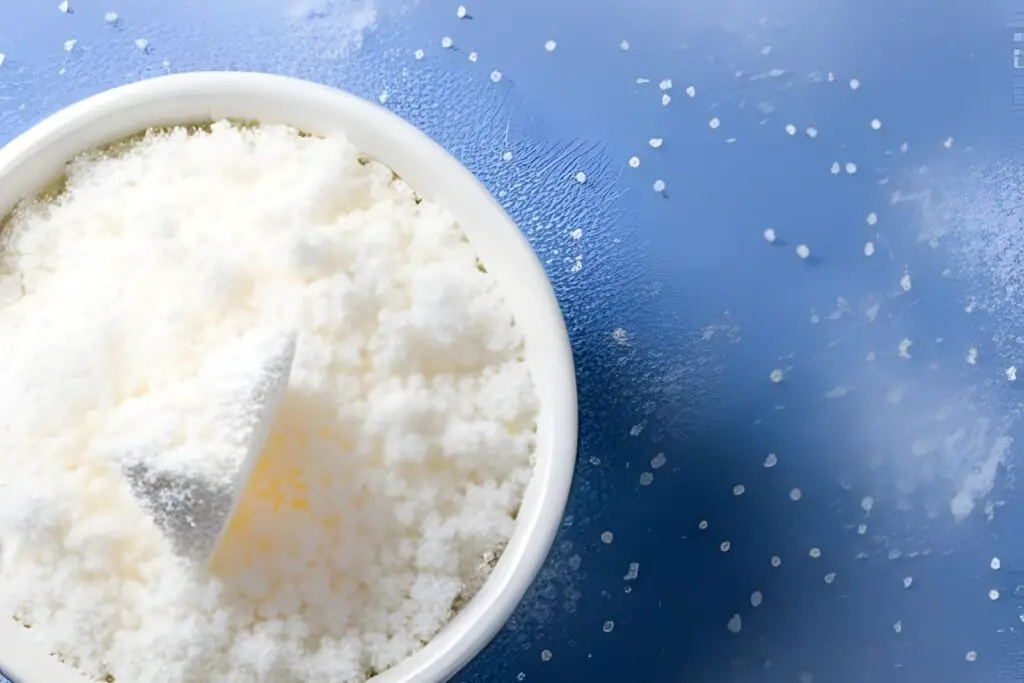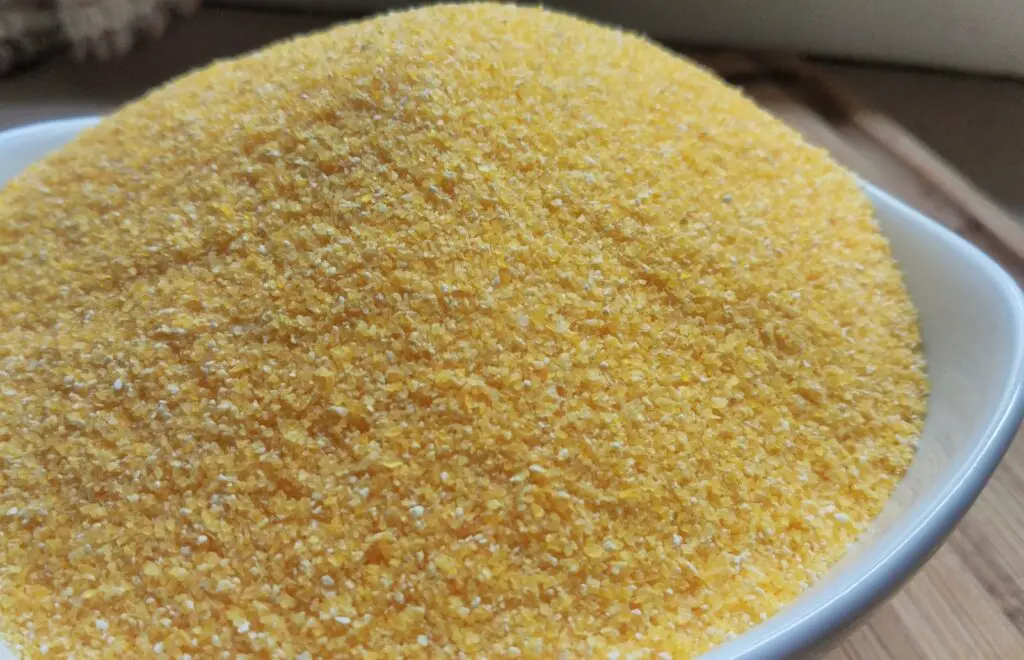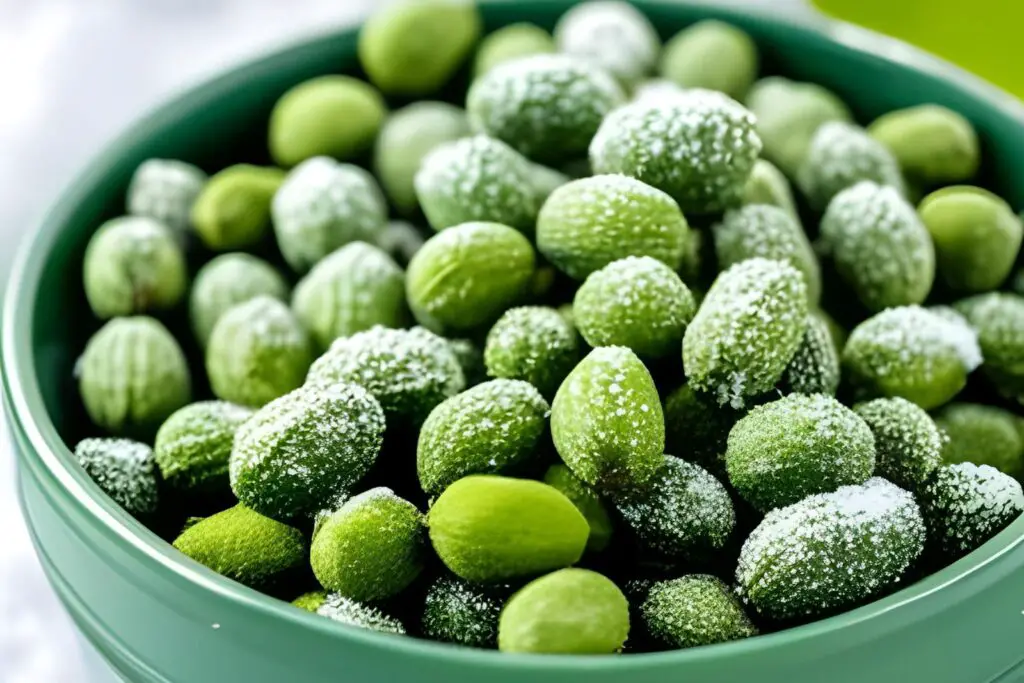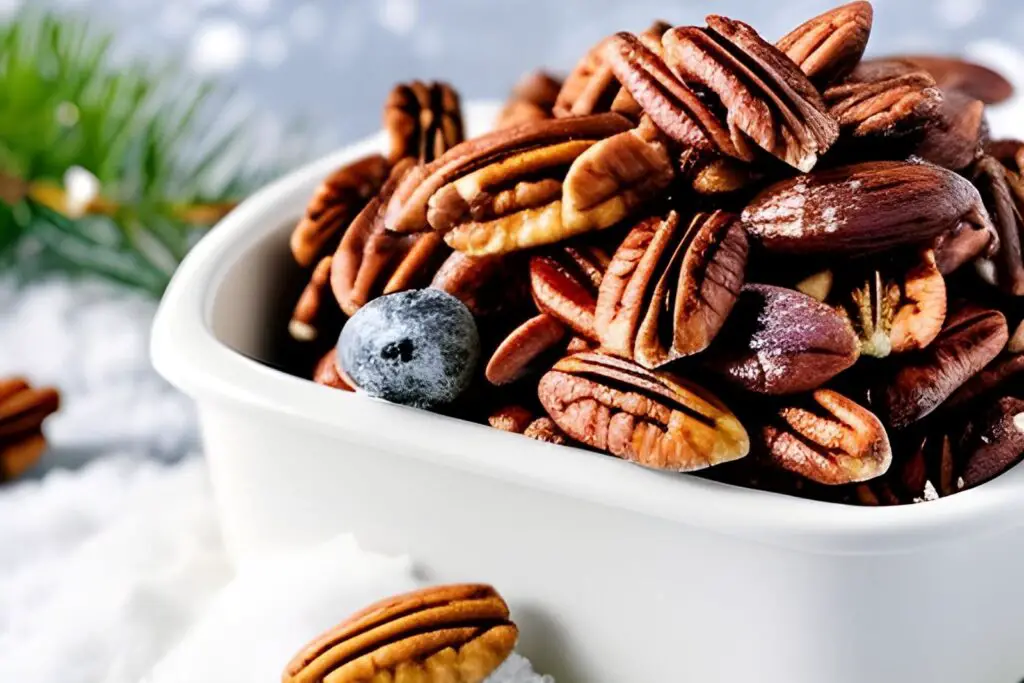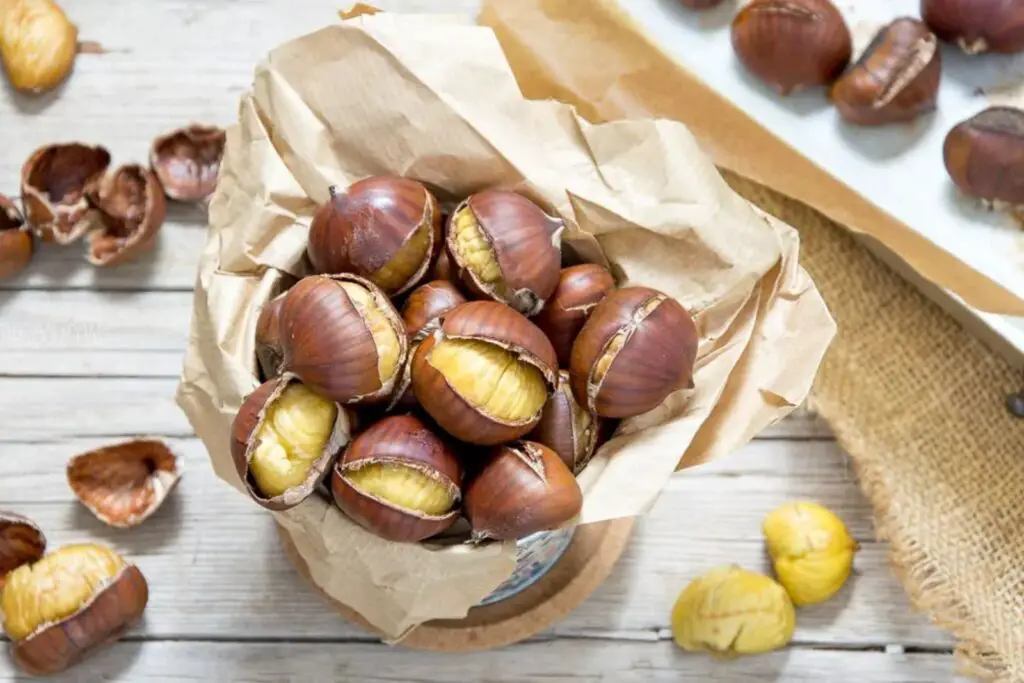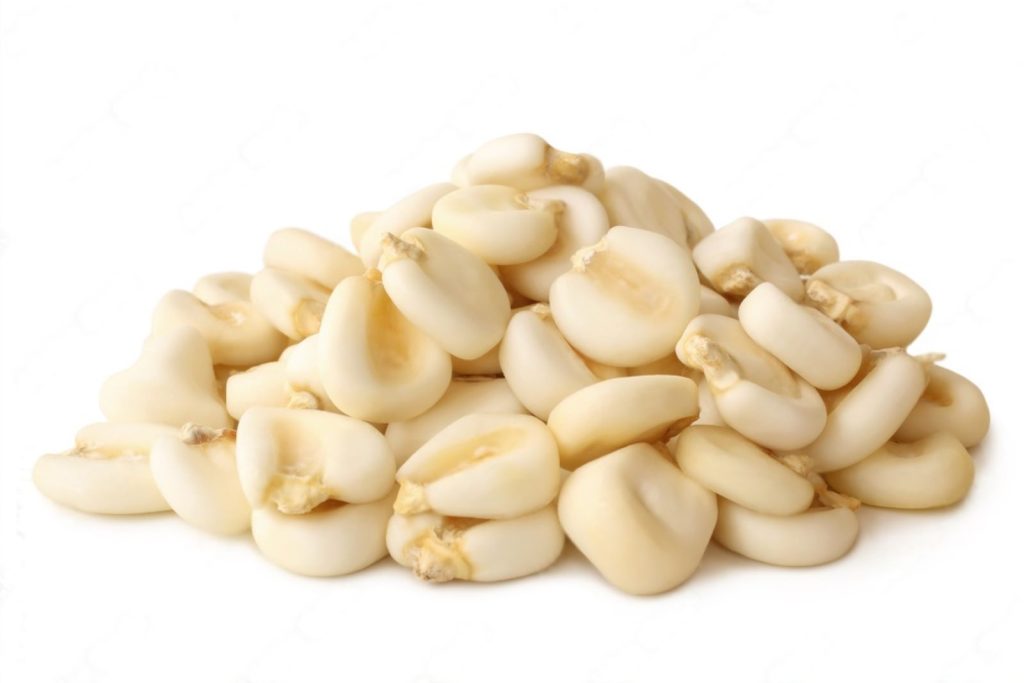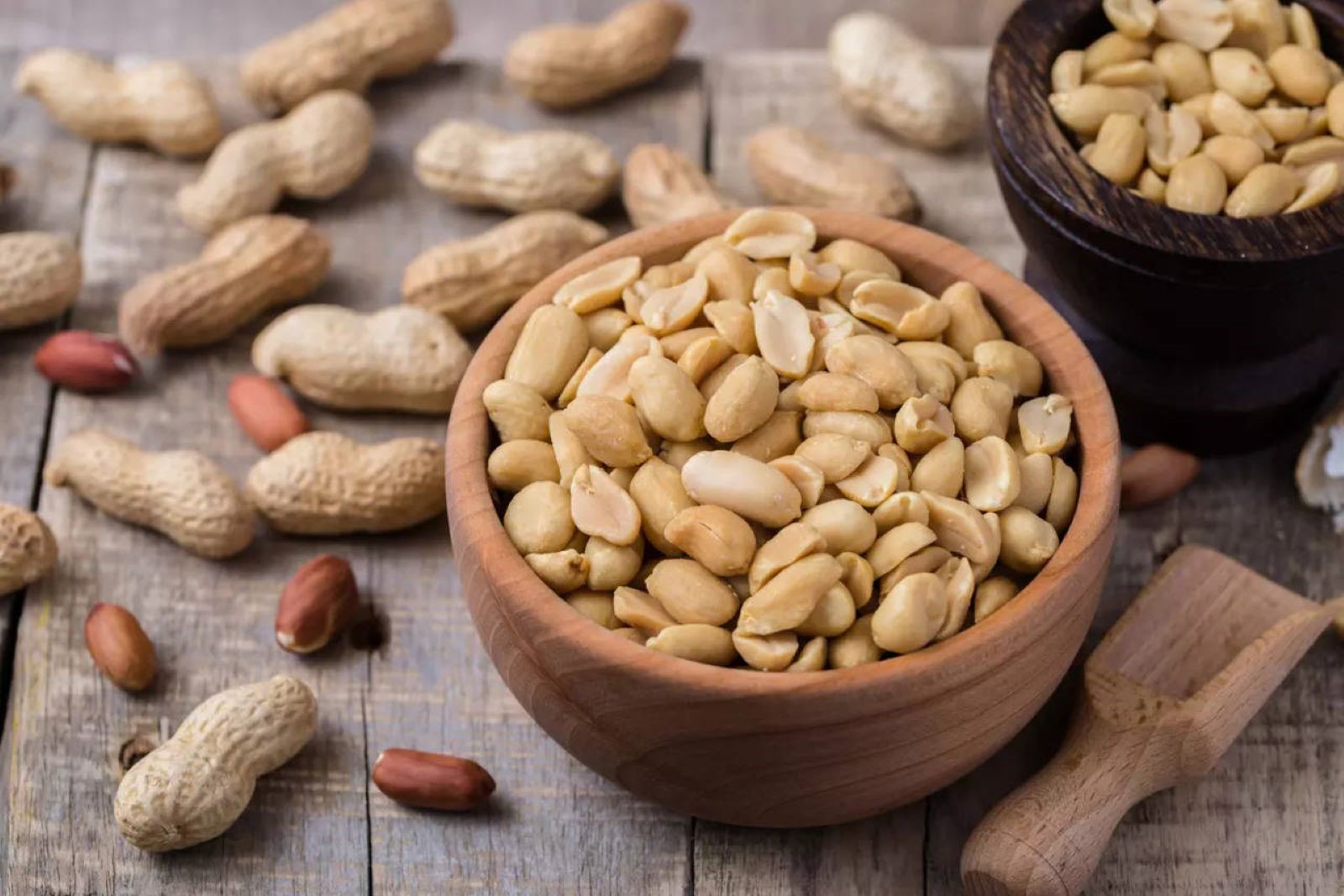
Peanuts, the crunchy and nutty delights, are a popular snack and a versatile ingredient used in various culinary creations. Whether enjoyed as roasted and salted treats, peanut butter spreads, or used as a flavorful addition to Asian dishes, their unique taste and texture make them a beloved choice for many. If you have a surplus of peanuts or want to stock up on this nutritious snack, freezing is an excellent method to prolong their shelf life and preserve their delightful flavor. By properly freezing peanuts, you can ensure they remain fresh and retain their characteristic crunch, making them a convenient and delectable addition to your snacking options and culinary endeavors. In this guide, we will explore the steps for freezing peanuts, including suitable packaging techniques and guidelines for thawing, ensuring that you can always have a stash of these delightful nuts on hand to indulge in anytime you desire. Join us as we embark on a journey to freezing peanuts, unlocking the secret to keeping their natural goodness intact and elevating your snacking experience to new heights.
Here are the simple steps to freeze peanuts:
Step 1: Choose High-Quality Peanuts
Selecting high-quality peanuts is crucial when it comes to freezing them effectively. The overall success of the freezing process and the taste and texture of the peanuts after thawing largely depend on the initial quality of the nuts.
Firstly, you have the option to choose between different types of peanuts, such as raw peanuts, roasted peanuts, or peanut halves. The decision on which type to freeze depends on your preferences and how you plan to use the peanuts later. Roasted peanuts, for example, may have a slightly different flavor profile compared to raw peanuts, so keep that in mind when making your selection.
Regardless of the type you choose, it is essential to inspect the peanuts for signs of spoilage or mold before proceeding with freezing. Fresh peanuts should have a pleasant nutty aroma and should not exhibit any off-putting odors or flavors. Check for any discolored or shriveled nuts, as these may indicate that the peanuts are past their prime and might not freeze well.
Peanuts that are free from damage or mold will have better moisture content, which contributes to their overall texture after thawing. High-quality peanuts are less likely to develop freezer burn or lose their flavor during freezing, ensuring that you can enjoy delicious peanuts even after an extended period in the freezer.
By taking the time to select high-quality peanuts, you set the foundation for successful freezing and enjoyable peanut treats in the future. So, always prioritize the freshness and condition of the peanuts when embarking on the process of freezing them.
Step 2: Clean and Sort the Peanuts
Properly cleaning and sorting the peanuts before freezing is a vital step in ensuring that you preserve only the best-quality nuts and maintain their freshness throughout the freezing process. Peanuts, like any agricultural product, can accumulate dirt, dust, and other debris during harvesting, transportation, or storage. Additionally, some peanuts may have become damaged or spoiled, which can affect the overall quality of the batch if not removed.
To begin, place the peanuts in a colander or sieve and rinse them thoroughly under cool running water. Gently rub the peanuts with your fingers to remove any surface dirt or residues. The cool water helps remove impurities without introducing excessive moisture, which can affect the peanuts’ texture during freezing.
After rinsing, pat the peanuts dry with a clean towel or paper towels. Excess moisture on the peanuts can lead to ice crystals forming during freezing, which might negatively impact the peanuts’ texture and taste when thawed. By drying them carefully, you ensure that the peanuts freeze more efficiently and retain their original quality.
As you clean the peanuts, take the opportunity to sort through them. Discard any peanuts that show signs of damage, such as discoloration, mold, or an off-putting odor. Damaged peanuts are more likely to deteriorate further during freezing, and including them in the batch could affect the overall flavor and texture of the other peanuts.
By thoroughly cleaning and sorting the peanuts, you eliminate potential contaminants and ensure that only the best peanuts make their way into the freezer. This attention to detail will result in frozen peanuts that retain their original taste, texture, and quality, making them a delightful treat when you decide to enjoy them later on.
Step 3: Shell or Unshelled the Peanuts (optional)
When freezing peanuts, you have the option to either keep them in their shells or remove the shells before freezing. This step is entirely dependent on your personal preference and how you intend to use the peanuts in the future.
Keeping the peanuts in their shells provides an additional layer of protection against freezer burn. Freezer burn occurs when food is exposed to air inside the freezer, leading to dehydration and a deterioration in texture and flavor. The shells act as a natural barrier, helping to maintain the peanuts’ moisture and prevent freezer burn. If you plan to store the peanuts for an extended period or simply enjoy the experience of shelling them before eating, this method is a great choice.
On the other hand, if you want the convenience of readily available shelled peanuts for cooking or baking, you can choose to remove the shells before freezing. Shelling the peanuts allows for easy access to the nutmeats, saving you time when you decide to use them in various recipes. Shelled peanuts are versatile and can be used as ingredients in desserts, salads, stir-fries, or as a topping for yogurt or oatmeal.
When shelling peanuts, you can do it manually by hand or use tools to assist you in the process. A nutcracker or a simple twist and squeeze method can help crack the shells open, making it easier to remove the nutmeats. It’s important to be gentle during this process to avoid damaging the peanuts.
Regardless of whether you choose to shell or unshelled the peanuts, both methods are equally suitable for freezing. The decision boils down to your personal preferences and how you plan to use the peanuts in your culinary adventures. By considering these options, you can customize the freezing process to suit your needs, ensuring that you have frozen peanuts that align perfectly with your cooking and snacking preferences.
Step 4: Package the Peanuts
Properly packaging the peanuts for freezing is essential to maintain their quality, prevent freezer burn, and ensure they stay fresh for an extended period. The packaging materials and techniques you choose play a crucial role in preserving the flavor, texture, and overall integrity of the peanuts during their time in the freezer.
The first consideration is to select appropriate containers for freezing. Airtight and freezer-safe containers are ideal for storing peanuts, as they create a protective seal that prevents air and moisture from entering, reducing the risk of freezer burn and maintaining the peanuts’ taste and texture. Alternatively, resealable plastic bags designed for freezing can also be used effectively. These bags have a durable construction that resists moisture and helps keep the peanuts in good condition.
Before sealing the containers or bags, it’s essential to divide the peanuts into smaller portions or meal-sized servings. This step makes it more convenient to thaw only the amount you need for a specific recipe or snacking session, rather than defrosting the entire batch each time. Smaller portions also freeze more quickly and uniformly, preserving the quality of the peanuts.
When filling the containers or bags, avoid overfilling them. Allow some room for expansion during freezing, as peanuts, like most foods, will slightly expand as they freeze. Overfilling can cause the packaging to burst or lead to uneven freezing, both of which can affect the peanuts’ quality. As a general guideline, leave about an inch of space at the top of the container or bag to accommodate this expansion.
Once the peanuts are properly portioned and packed, securely seal the containers or close the resealable bags, ensuring no air can enter. Trapped air can contribute to freezer burn, which can compromise the peanuts’ taste and texture over time.
By using airtight, freezer-safe containers or resealable plastic bags and dividing the peanuts into smaller portions, you ensure that your frozen peanuts remain fresh, flavorful, and easy to manage in the freezer. Proper packaging sets the stage for successful freezing, allowing you to enjoy the taste of delicious peanuts whenever you desire, whether it’s for a quick snack or to enhance your favorite recipes.
Step 5: Remove Excess Air
Removing excess air from the packaging before sealing is a crucial step in freezing peanuts to maintain their quality and prevent the development of freezer burn. Freezer burn occurs when the surface of the peanuts is exposed to air, causing moisture to evaporate and ice crystals to form. This can lead to a loss of flavor, texture, and overall freshness.
If you are using resealable plastic bags, gently press out as much air as possible from the bag before sealing it shut. Start by sealing the bag most of the way, leaving a small opening. Then, press down on the bag, starting from the top and moving downwards, to push the air out. Finally, seal the bag completely to create a tight seal that minimizes the amount of air trapped inside.
For those using containers, it’s essential to leave only a small gap at the top before sealing the lid. As the peanuts freeze, they will slightly expand, and leaving some space allows for this expansion without causing the container to crack or distort. By minimizing the air inside the container, you reduce the chances of freezer burn and help preserve the peanuts’ taste and texture.
Excess air in the packaging creates an environment where moisture can escape from the peanuts and oxygen can penetrate, leading to freezer burn. The freezer burn can affect the peanuts’ appearance, texture, and flavor, resulting in a less enjoyable snacking or cooking experience. Therefore, taking the extra step to remove excess air ensures that the peanuts remain in optimal condition throughout their time in the freezer.
By removing excess air diligently from the packaging, you increase the chances of enjoying perfectly frozen peanuts with no unwanted side effects of freezer burn. Your efforts in preserving the quality of the peanuts during the freezing process will be rewarded with delicious, fresh-tasting peanuts that can be enjoyed for months to come.
Step 6: Label and Date the Packages
Labeling and dating the packages of frozen peanuts is a crucial organizational step that helps you keep track of their contents and freezing date. While peanuts can remain safe to eat for several months when properly frozen, labeling serves as a reminder of their freshness and ensures that you consume them within an optimal timeframe.
By labeling each package with the contents, you can easily distinguish between different types of peanuts, especially if you have frozen various varieties or preparations. For instance, you might have separate packages of roasted peanuts, raw peanuts, or peanuts seasoned with different flavors. Labeling allows you to quickly identify the type of peanuts you want to use, eliminating the need to open multiple packages to find what you’re looking for.
Furthermore, labeling the date of freezing provides essential information about the peanuts’ age in the freezer. While peanuts can remain safe to eat for an extended period, their quality may gradually degrade over time. By knowing the date of freezing, you can prioritize the consumption of older batches and ensure you use them before the quality starts to decline. This helps avoid accidentally keeping the peanuts in the freezer for too long and risking a decrease in taste and texture.
Additionally, the labels enable you to practice the “first in, first out” method when using the frozen peanuts. By consuming the oldest packages first, you ensure that none of the peanuts go to waste due to extended storage. This systematic approach ensures that you always have a fresh supply of peanuts on hand.
By taking a few moments to label and date the packages, you streamline the process of managing your frozen peanuts and make the most out of their extended shelf life. Keeping them organized and within their peak freshness ensures that you can enjoy the delightful taste and nutritional benefits of peanuts whenever you desire, making them a versatile and enjoyable snack or ingredient year-round.
Step 7: Freeze the Peanuts
Now that you have properly packaged and labeled the peanuts, it’s time to place them in the coldest part of your freezer for the freezing process. Following specific guidelines for freezing temperature and speed will ensure that the peanuts retain their optimal taste and texture when thawed.
The coldest part of the freezer is usually located at the back or the bottom. This area experiences the least fluctuation in temperature and provides the most stable environment for freezing food. By placing the packaged peanuts in this section, you reduce the chances of temperature variations, which could lead to freezer burn or affect the peanuts’ overall quality.
It’s crucial to set the freezer temperature at 0°F (-18°C) or lower to ensure proper freezing. At this temperature, the water molecules in the peanuts freeze quickly, forming smaller ice crystals. Smaller ice crystals are less likely to cause cellular damage to the peanuts, helping them retain their texture and flavor better when thawed. Freezing at higher temperatures may result in larger ice crystals that can compromise the peanuts’ integrity and lead to a loss of quality during storage.
The speed of freezing also plays a significant role in maintaining the peanuts’ quality. The faster the peanuts freeze, the better their texture and taste will be when thawed. Rapid freezing helps preserve the peanuts’ cellular structure, preventing the formation of large ice crystals that can damage the nutmeats. To achieve rapid freezing, avoid overcrowding the freezer with too many items, as this can impede airflow and slow down the freezing process.
By adhering to the recommended freezing temperature and ensuring rapid freezing, you create the ideal conditions for preserving the peanuts’ taste, texture, and nutritional benefits. Proper freezing allows you to enjoy delicious, freshly frozen peanuts whenever you desire, whether for a quick snack or to add a delightful crunch to your favorite recipes.
How long can peanuts last in the freezer?
Peanuts can last in the freezer for up to 1 year without a significant loss in quality. When properly stored in airtight containers or resealable bags, they remain safe to eat beyond this timeframe, but their taste and texture may gradually decline. Labeling and dating the packages can help monitor their freshness and ensure timely consumption.
Step 8: Thaw the Frozen Peanuts
Thawing frozen peanuts properly is essential to ensure they maintain their quality and remain safe to eat. The method of thawing largely depends on how you intend to enjoy the peanuts – as a quick snack or as an ingredient in recipes or peanut butter.
If you plan to eat the frozen peanuts as a snack, there’s no need to thaw them fully. You can enjoy them straight from the freezer. The frozen peanuts will have a delightful crunch and a refreshing taste, making them a convenient and satisfying snack option. Plus, eating them frozen ensures you get the maximum nutritional value from the peanuts.
However, if you intend to use the frozen peanuts in recipes or to make peanut butter, it’s best to thaw them in the refrigerator overnight. Thawing peanuts slowly and evenly in the refrigerator prevents temperature shock and helps maintain their texture and taste. This gradual thawing process ensures that the peanuts thaw uniformly without losing moisture or becoming mushy.
To thaw the peanuts in the refrigerator, simply transfer the package from the freezer to the fridge the night before you plan to use them. By the next day, the peanuts will be fully thawed and ready for use in your culinary creations.
Avoid thawing frozen peanuts at room temperature or using the microwave, as these methods can result in uneven thawing and may compromise the peanuts’ quality. Additionally, thawing peanuts at room temperature for an extended period could lead to bacterial growth and spoilage.
Once the peanuts are thawed, whether partially or fully, you can enjoy them in various ways – as a snack, in salads, stir-fries, baking, or blended into creamy homemade peanut butter. The versatility of thawed peanuts allows you to incorporate them into a wide range of dishes to elevate their flavor and nutritional value.
By following the appropriate thawing method based on your intended use, you can fully appreciate the natural goodness and delicious taste of the frozen peanuts you carefully preserved. Thawing the peanuts correctly ensures that you can savor their unique flavor and texture, adding a delightful touch to your meals and snacks.
Other related questions
Can you refreeze peanuts ?
Yes, you can refreeze peanuts under certain conditions. If the peanuts were thawed in the refrigerator and maintained at a safe temperature (below 40°F / 4°C) during the thawing process, they can be refrozen without significant loss of quality. However, repeated thawing and refreezing can affect taste and texture, so it’s best to avoid doing this excessively to preserve the peanuts’ optimal freshness.
How do I know if the peanuts have gone bad after being frozen?
After being frozen, peanuts can go bad if they experience freezer burn or if they are exposed to temperature fluctuations. Signs of freezer burn include dry, discolored, or shriveled nuts. If the peanuts develop an off-putting odor, flavor, or show signs of mold or spoilage, they have likely gone bad and should be discarded to ensure food safety.
Is it possible to freeze roasted peanuts?
Yes, it is possible to freeze roasted peanuts. Roasted peanuts can be frozen in an airtight container or freezer bag for long-term storage, extending their shelf life and maintaining their flavor and texture when properly thawed. Remember to cool the roasted peanuts to room temperature before freezing to prevent condensation inside the container.
Can I freeze peanuts with seasonings or spices?
Yes, you can freeze peanuts with seasonings or spices. Before freezing, make sure the seasoned or spiced peanuts are in an airtight container or freezer bag to prevent odors from spreading to other foods. Properly stored, the frozen peanuts will retain their seasoned flavors and can be enjoyed after thawing.
Are there any differences in freezing raw peanuts versus roasted peanuts?
When freezing raw peanuts versus roasted peanuts, there are some differences to consider. Raw peanuts should be blanched before freezing to remove the skins and preserve their quality during storage. On the other hand, roasted peanuts can be frozen without blanching, but it’s essential to cool them to room temperature before freezing to prevent moisture build-up. Regardless of the type, both raw and roasted peanuts should be stored in airtight containers or freezer bags to maintain their flavor and texture.

